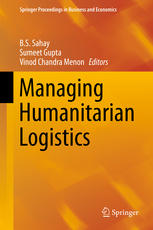

Most ebook files are in PDF format, so you can easily read them using various software such as Foxit Reader or directly on the Google Chrome browser.
Some ebook files are released by publishers in other formats such as .awz, .mobi, .epub, .fb2, etc. You may need to install specific software to read these formats on mobile/PC, such as Calibre.
Please read the tutorial at this link: https://ebookbell.com/faq
We offer FREE conversion to the popular formats you request; however, this may take some time. Therefore, right after payment, please email us, and we will try to provide the service as quickly as possible.
For some exceptional file formats or broken links (if any), please refrain from opening any disputes. Instead, email us first, and we will try to assist within a maximum of 6 hours.
EbookBell Team

4.0
26 reviewsThis book discusses emerging themes in the area of humanitarian logistics. It examines how humanitarian logistics and supply chains play a key role, focusing on rapidly delivering the correct amount of goods, people and monetary resources to the locations needed to achieve the success of relief efforts in response to global emergencies such as flood, earthquakes, wars etc. With an increase in the frequency, magnitude and impact of both natural and manmade disasters, effective delivery of humanitarian aid is an issue that is becoming increasingly important in the context of disaster management. The book focuses on how logistics systems and supply chains responsible for delivering this aid from origin to recipients can be made more effective and efficient. It also discusses how the development of information technology systems that can provide visibility to the disaster relief supply chain marks a huge step forward for the humanitarian sector as a whole. As more organizations begin to adopt and implement these systems and visibility is established, the use of key performance indicators will then become essential to further enhance the efficiency and effectiveness of these supply chains.